The



Robert Reetz has worked in the Mounds View Public Schools district for 15 years. Prior to serving as principal at Mounds View High School, he was principal of Chippewa and Edgewood Middle School, and, before that, he worked as a professional learning specialist, an instructional strategies facilitator and a special education teacher at Irondale.
In his first year at Mounds View High School, Reetz was tasked by Superintendent Chris Lennox to address many of the rising issues facing the school, such as absenteeism, school fights and vaping. Throughout the school year, Reetz has worked with administration to implement policies that combat these issues including the digital pass system, the systematic locking of bathrooms, the changes to study halls and the enforced consequences of videoing and sharing videos of fights.
Many of the new rules issued by Reetz have been designed to keep students in class. “I felt like it needed to be addressed, and in part, what you guys experienced
is me trying to more normalize being where you’re supposed to be,” said Reetz.
he’s a good leader at our school,” said Shin. Despite the backlash from students surrounding restricted student freedom, Reetz still stands by his decisions as necessary precautions to help the school. “20% of our students both semesters have carried a D or an ‘I’ throughout the entire semester… So we are talking about a pretty big number of students for whom I want to improve their experience.”
He also explained that students attending their classes reduces many of the problems that Mounds View has been facing. With 22 in-school fights occurring within the first 12 weeks of the year, tackling the issue of fighting was a top priority for Reetz, and he believes that reducing absenteeism is key to solving that issue. “In almost every situation, kids getting in fights was [because] they weren’t where they were supposed to be,” said Reetz.
In retrospect of the new policies, there have been mixed opinions on their effectiveness. Some, such as social studies teacher Scott Oberg, hold Reetz’s policies in high regard. “His policies are well-intentioned, his policies are good for the betterment of the school. His policies are met with some resistance, as expected, but I think over time, the policies in general that Rob Reetz is trying to implement will be positive for the culture and the environment at Mounds View,” said Oberg. However, not everyone agrees with the route Reetz’s policies have taken. “I think his policies are effective, but they sacrifice a lot of the freedoms for the students who already followed those policies,” said junior Daniel Shin.
In Shin’s opinion, were Reetz to make a few changes, he would view Reetz’s first year at Mounds View as a success. “If you eliminate a couple of the policies that he has implemented, like locking bathrooms or going to the forum for the free hour... I’d say I think
Although Reetz views the changes of freedom as a necessity, he does acknowledge the frustration and hopes that students will come to understand. “But then you look at the 80% of students who are crushing it. This is why it’s hard. I think they feel like I’ve made decisions that have not been in their best interest or given them as much freedom as they want,” said Reetz.
As the school year comes to an end, Reetz looks forward to next year with a positive mindset. He hopes to continue to improve the social environment at Mounds View. “I’m very optimistic,” said Reetz. “We’ve made a lot of gains just in terms of making this feel like a more positive, supportive and safe environment. So I’m pleased with where we’re at. But I will never stop wanting to improve.”
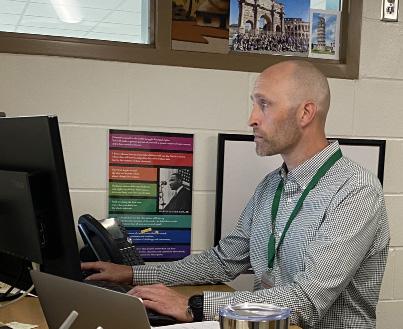
 by
by
Governor Tim Walz signed a new initiative on May 24, which will allow numerous eligible Minnesota students to pursue tuition-free education at public colleges within the state. The “North Star Promise” scholarship program, which will go into effect next school year, aims to cover the expenses of students enrolled in two-year or four-year programs at the University of Minnesota, Minnesota State system or in-state tribal colleges from families earning below $80,000 per year.
for college, and college prices right now are so so high. I think it’s amazing that people are getting equal opportunities to go to school.”
Senior Kristen Cosgrove also shares her approval of the bill. “As a very middle-class citizen whose college [tuition] is kind of a very scary thing when it comes to finances for my family, I’ve been very, very happy to hear that it’s passed,” she said.
free college is controversial, the initiative is receiving very little disapproval from students. “I think it’s great,” said junior Ethan Zhao. “I don’t know anyone that would not be okay with it.”
The “North Star Promise” has received long time support from Minnesota Democrats and will now begin on July 1, 2024. It will cost the state $117 million in the first year.
With The Minnesota Office of Higher Education expecting the bill to impact 15,000-20,000 students currently enrolled, many recognize the potential benefits of the initiative. Greta Johnson, who, as a senior, is coming to understand the financial burden of college, expressed her support saying, “I think it’s an amazing idea because those who are struggling to pay
The “North Star Promise” also addresses socioeconomic disparities and its connection to education. “I feel like it’s a great way for low-income families to be able to afford college because I know that a lot of times low income is due to low education,” said Thierry Thao, senior.
While the issue of how to address student debt and
Maya Gjelhaug, Tyler Quattrin
Maya Gjelhaug, Tyler Quattrin
Alex Bi
Michael Wang
Lale Baylar
Alex Bi, Isabella Kunc
Isabella Kunc, Isabel Li
Gloria Liu
Charlotte Krum
David Anton Golridge
Gloria Liu
Nikhil
Khadra
Larson Owen Schwalm, Ahmed
Sharara, Gao Zhong Thao, Kia Yang, Rachel Zou
“I think [the North Star Promise scholarship program will] equal out the playing field.”
Greta Johnson, ‘23
Morghan Larson and Tyler Quattrin staff reporter and print editor-in-chiefphoto courtesy of Wikimedia Commons
“There [are] always going to be people who are going to take advantage of it... but I think that is going to create a lot of opportunity for kids that deserve it.”
Kristen Cosgrove, ‘23
“I think he’s working hard to implement the vision that he has for the school.”
Scott Oberg, social studies teacher
“ I think his policies are effective, but they sacrifice a lot of the freedoms for the students who already followed those policies.”
Daniel Shin, ‘24
 by Khadra Abdulahi staff reporter
by Khadra Abdulahi staff reporter
After being passed by state senators and soon to be signed by Governor Tim Walz, the bill pushing for the legalization of marijuana will make Minnesota the 23rd state to allow its recreational use. Recreational marijuana usage has greatly grown in popularity, with 11.8 million people in the United States having reported using marijuana in the past year, prompting a re-emergence of the marijuana debate in Minnesota. Although legalizing marijuana has seen many benefits, often leading to increased tax revenues, job growth and investment opportunities, and has provided powerful incentives to push for legalization across the United States, Minnesota must make note that it has also has many unintended consequences and could potentially cause a decline in public health and greater exposure of marijuana to the younger generations.
Immediately after the legalization of marijuana, surprisingly, states did not witness a fluctuation in their crime rates. According to EBP Society, current studies show no evidence regarding the expected positive effects of the legalization of marijuana on crime cases as there has been little to no change in crime rates. After the signing of the bill, one would expect similar results in the state of Minnesota.
While legalizing marijuana has not had a significant impact on the rate of crimes, it has made a huge impact on public health in general and could put future generations at great health risks. According to the National Institutes of Health, adults who use marijuana are more likely to have psychotic disorders in comparison to adults who do not use the drug. Namely, following the legalization of marijuana, society has seen increased risks of schizophrenia, psychosis as well as
More importantly, this change will allow minors easier access to marijuana. Already, according to the National Library of Medicine, the rate of marijuana exposure in children less than 6 years of age from 2000 to 2013 was 2.82 times higher in states where marijuana was legalized in comparison to states where it was not. Thus, Minnesotans ought to realize the effects of the legalization of marijuana on their communities’ youth and initiate appropriate limitations on its uses.
“Thus, Minnesotans ought to realize the effects of the legalization of marijuana on their communities’ youth and initiate appropriate limitations on its uses.”
suicide ideation. Legalizing marijuana in Minnesota could potentially further intensify these mental health issues.
Many states across the United States have legalized recreational use of marijuana. The push for its legalization in Minnesota is a clear indication that people’s thoughts regarding the drug are changing, although the drug itself has not. It is important for Minnesota to acknowledge the unintended consequences that come with marijuana and place appropriate limitations on this potential newfound freedom.
I have been in the Mounds View School District since kindergarten, and since kindergarten, I have dreaded coming to school. While even in elementary school my attendance was shaky at best, and once I reached high school, my chronic absenteeism became a larger issue.. Yet, after many threats and empty promises, Mounds View never actually addressed the real reason I have missed so much school.
To start, I am in no way defending how I acted; I am not a model student. This is just my experience — how Mounds View has handled my case and the issues I have encountered throughout high school.
I was first labeled as “truant” my sophomore year. In the beginning, no one said anything about my attendance, which was understable due to distance learning, so I continued to miss more and more school. At first, I started skipping because of the anxiety and stress
that came from the intense bullying I experienced at school, but then it became fun. Admittedly, there was an adrenaline rush that came along with skipping. I would run around the school hiding from teachers with my friends, but by the time everything had settled, my

“By the end of the year, the amount of school I was missing soon became solidified as the norm in my head. Now, I knew nothing else — I was officially the ‘absent kid.’”
anxiety kicked in, and I felt ashamed to go back to class, especially knowing how my teachers would greet me. By the end of the year, the amount of school I was missing soon became solidified as the norm in my head. I knew nothing else — I was officially the “absent kid.”
The following school years, it became an even larger issue. Both my senior and junior years, I was truant from near the beginning of the year. I was failing several classes and almost never attended. Both years, Mounds View and Ramsey County sent me truant letters, but I remember staring at them and thinking how they felt like empty threats. In addition, during my truancy, administration only ever contacted me and my parents through email, never once requesting an inperson meeting. Ideas on how to help me were always thrown around, from moving seats to learning accommodations, but then again when I tried to follow up with these ideas, nothing ever truly came of it.
Again and again this cycle of emails and letters continued, until now — my senior year. As a senior
who is about to graduate, I certainly look back and wish I had changed some things, but I more so wish Mounds View had changed as well. In retrospect, the true center of my chronic absenteeism was the lack of advocacy the school had for me when it came to what I was going through. Since the beginning of high school, I experienced harassment that seemed never-ending. My freshman year, a time when the bullying was at its peak, I was often visibly upset in class, but only a single teacher ever spoke up about what was happening to me. And, while it didn’t end the remarks, I will remember the actions of that teacher forever as she was the only one who noticed the real problem and didn’t just discard me as some truant kid who skipped only for fun like administration seemed to believe I was.
Knowing what I know now, I would have appreciated a safe space to go to. During one of the conversa-
“However, when I asked for a meeting, I found there was a three month waitlist for a therapy session and was deterred from seeking help.”
tions I had with administration, they offered me the option of seeing a school therapist. However, when I asked for a meeting, I found there was a three-month waitlist for a therapy session which deterred me from seeking help. Possibly, if I was given a space that didn’t involve drawing more attention from my peers and parents, a space that valued anonymity and support and gave me the proper tools to handle my issues, school could have been better for me.
In all my years, school never felt like a space where I was safe. If a student is skipping class, especially full school days at a truant level, it is more than likely they are somehow struggling, whether that be with family or mental health. As one of these students, Mounds View should take further steps to help these students and, most importantly, follow through.
When the class of 2023 elected Garima Khatiwada, Iris Ren and Roman Wong as their Senior Class Officers (SCOs), they also bestowed upon them many responsibilities. So far, they have planned last year’s Junior Takeover, Senior Sunrise and Senior Party. They also do other tasks such as running the official Mounds View Class of 2023 Instagram page. Now, they are focusing their attention on their final event of the year: graduation.
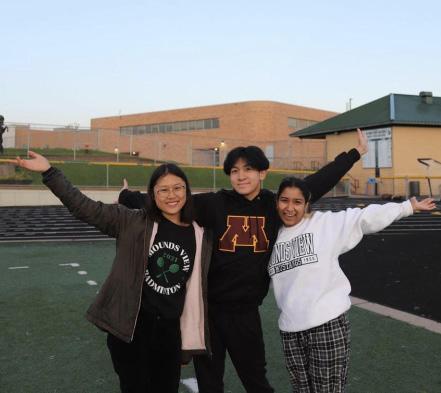
with questions about senior year events or changes they want to see in the school. “I’m very extroverted, always excited to meet new people and love planning events, so I thought the SCO position would be a good fit for me,” said Khatiwada. “I really want our whole class to feel involved and accepted in the MV community.”
For Ren, running for SCO allowed her “to be a part of the exciting and stressful end of high school to make the events especially memorable.” She wanted to highlight the diversity of the class of 2023 and how “wonderful” it was. To do this, she made sure to have opinions and input from all demographics of students.
Wong also had similar goals, and his ambitions led him to pursue becoming an SCO. “What motivated me to run for SCO is to challenge myself to take on a leadership position, as well as to do something great for our senior year,” he said. One of his goals was to include all the seniors and allow them to have a voice for their opinions and ideas.
of an experience as they did. Khatiwada offers this advice: “Put yourself out of your comfort zone and join different clubs and activities, actually talk to the people you sit next to and take risks.”
At graduation, the SCOs each give a speech sending off the graduating class. “For our graduation speech, we decided to write about the past, present and future, with each of us being responsible for one of the three,” said Wong. Ren hopes that their speeches can send the senior class off on a light-hearted note with hope for the future.
Khatiwada, Ren and Wong have all been on Student Council for the majority of their time at Mounds View, making memories that will last for years to come. They all particularly liked working on large events with the rest of Student Council. “It was awesome to be part of all the behind-the-scenes planning of school events and activities,” said Wong. Those experiences eventually led to the three of them running for Senior Class Officer.
Khatiwada ran for the position with the goal of being someone who the senior class could reach out to

As Senior Class Officers, Khatiwada, Ren and Wong all have shared goals for the year. One of these goals was to make sure that all seniors could be involved in the development of events. They have done this by creating forms for decisions such as the senior motto, class shirts, nominating a teacher to speak at graduation and recommending songs for the Senior Sunset. “Everyone gets a say on those things rather than just us making decisions,” said Khatiwada.
Surprisingly, being a SCO is a lifetime commitment. In the future, the Senior Class Officers will organize class reunions every ten years. The three officers will be responsible for finding a venue, creating an event and getting the word out to people about the reunion.
But for now, the SCOs look towards the immediate future: a new grade of students entering Mounds View. The SCOs hope that the new class can have just as great
What do you hope to change about National Honor Society (NHS)?
Kylie: We just want NHS to feel more like a community, and so one of the ideas we had originally was to make these monthly meetings where the whole chapter was together, and that’ll help people kind of get to know others.
Matthias: So I’m trying to change the fact that you can’t volunteer with other groups. I think that you should be rewarded if you do that. And then I’m trying to change what NHS focuses on. Me and my copresident want to make it so NHS focuses on educational equity throughout our greater community, not just necessarily Mounds View or the Mounds View School District.
How will you do that?
Kylie: One of my focuses would be on trying to help students who are maybe lower income and have other barriers to education and kind of focus more on those volunteer opportunities to help them overcome barriers to education.
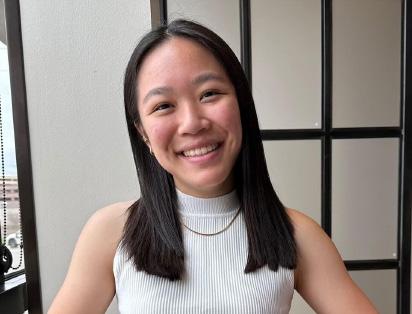
Matthias: Just getting more events and fundraising on concepts based on educational equity.
What aspects of NHS will you try to preserve?
Kylie: Well, we like the fact that the NHS is such a big program because we can reach a lot of different communities this way through different students with different interests, and we want to continue growing that part of NHS.
Matthias: I’d say NHS is a pretty open club, like there’s no one way to complete all your hours in NHS. I feel like that’s a positive. So just kind of making sure that it’s still fluid for all the individuals.
What was your main motivation for running for co-president?
Kylie: It was just kind of a very impromptu kind of decision I guess. So we were just in History [class] and then we were just like ‘oh, wait, what if we ran?’ and then that’s really all there is.
Matthias: Mainly just, again, changing what NHS focuses on, I suppose. And the Educational Equity aspect of our campaign.
What makes you qualified/good fit for the postion?
Kylie: Well, both me and Matthias have a lot of leadership experiences. We [ran] as a last minute decision because we already have previous experience and leadership roles. So I have a lot of experience, like running [USA Biology Olympiad] through morning announcements and kind of organizing Google Classroom in a better way than it kind of is right now.
Matthias: I have experience being a communicator for a leadership role, I feel like that is definitely a good qualification to have.
How did you campaign?
Kylie: A lot of it was individual outreach. And we just wanted to get to people that maybe weren’t really sure who to vote for, and we wanted to make sure they knew the options available to them and kind of make it easier to vote and make it known when voting was, making it easier to find, like the form and that sort of thing.
Matthias: Mostly just putting up fliers. I mean, we filmed a video, of course. You know, just reaching out to the voter base and making sure that we appeal to what everybody wanted in our campaign.
What was most successful about your campaign?
Kylie: I think it helps that we both know a wide variety of people from different circles.
Matthias: I’d say our posters were pretty good.
Why do you think you won?
Kylie: I hope we won because people really liked our videos and saw us as potential leaders.
Matthias: I feel because we just, we kind of appeal to a broad audience. I feel like that was definitely a positive that we had.
“It was awesome to be part of all the behind-the-scenes planning of school events and activities.”
Roman Wong, ‘23photos by Rachel Zou
“Put yourself out of your comfort zone and join different clubs and activities, actually talk to the people you sit next to and take risks.”
Garima Khatiwada, ‘23by Maya Betti staff reporter
Science teacher Michael Cartwright’s journey at Mounds View began in the spring of 1991 as a tennis coach. Now, as an established teacher of 31 years, Cartwright plans to move on from teaching after years of shaping the school community.
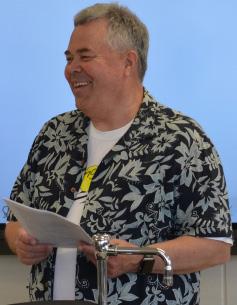
Before pursuing teaching, Cartwright received a bachelor’s degree in biology and chemistry from the University of Minnesota before attending medical school. However, during his third year in the medical school program, he took a leave of absence, as he was unsure where to continue. This is when his medical advisor brought up the success he had with coaching and made a suggestion. “He asked if I’d ever considered teaching, and I really hadn’t. But, during my leave of absence, I got my teaching license and tried it. Haven’t looked back,” said Cartwright.
you’re there to support them and help them across hurdles,” he said.
As many of his students know, throughout the years, Cartwright has continued to hold high expectations for student success due to this process. “For somebody to learn to be their best, they need to be challenged. I believe that you set the bar high, and then you help students achieve those goals,” he said.
For him, helping students grow their desire to learn has been the most rewarding part of his job. “I’m going to miss the daily interactions with students where they want to understand something better, and I can help explain it in a way that makes sense,” said Cartwright. He has found that, when challenged conceptually and academically, his students bring in an energy that is contagious and keep his passion for teaching alive, even after teaching the same subject for over three decades.
Though Cartwright is leaving Mounds View, he is leaving behind a legacy he is proud of. Physics Fair, which he started in 1996 and has continued faithfully since, will be an enduring reminder of the contributions he has made to the community. With its project-based nature, Cartwright has found it has given students an opportunity to learn in a unique way. “Students can learn a lot about themselves and about the subject matter when they’re involved in a big project like that,” he said.
career, he wants his students to know the impact they have had on him. “I thank all my students for putting up with me for all this time and accepting my sarcasm. Hopefully they know that I just want them to be successful and happy.”
With Cartwright’s previous experience as a coach, he soon incorporated a lot of what he learned coaching into the way he approached teaching. In fact, he attributes much of his success as a teacher to the self-titled “coaching approach,” a method, as he explains, that allows students to work on their weaknesses while continuing to build up their strengths. “It’s a model where the students are responsible for their own learning, but
While Cartwright is retiring from education, he explains he is not ready to stop working. For him, this means continuing to focus on the solar energy industry in an effort to make a more environmentally conscious community. “That’s my goal right now — to help people and schools and businesses become more energy efficient and focus more on renewable energy [and to] move away from fossil fuels as much as possible,” he said.
As Cartwright transitions to the next stage in his
When junior Lulu Ma first met her dog, Cooper, neither could have known the journey they would go through together as they climbed the ranks of dog sports. From agility to frisbee to obedience, the duo has accomplished hundreds of tricks and won numerous awards through countless hours of practice.
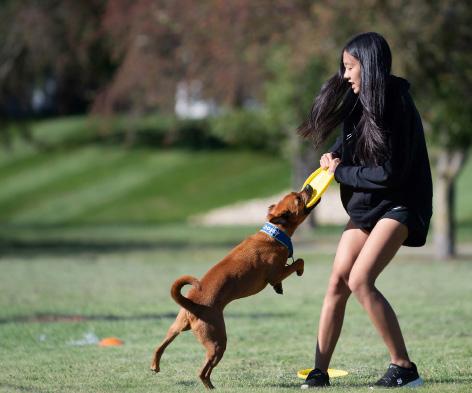
Before they got Cooper, Ma’s family was looking for one thing: an adolescent, potty-trained dog. However, when the local animal shelter received a litter of puppies from Mississippi, Ma and her mother felt compelled to check them out. When they arrived, there was one puppy left — small and definitely not potty-trained. Still, Ma took him to the visiting room to play. “He squished himself between my back and the wall, and he fell asleep, and I was like, ‘I want this one,’” said Ma, and then, without the knowledge of her dad, her family now had a dog.
Ma’s dog training journey didn’t start with Cooper until a couple months later, late in her seventh grade year, when Ma met a friend who self-trained her own dog. After attending some of her friend’s events and teaching some simple tricks to Cooper, she decided to join the Hennepin 4-H club, a club that helped her introduce Cooper to dog sports like agility and obedience, eventually leading the pair to competing with the American Kennel Club (AKC).
over.”
Due to this, Ma had to shift her previous mentality to compensate. “Good things take time” became her working philosophy as she learned to slow down and accept mistakes. “I’m kind of a perfectionist, so that’s really been a learning curve for me to go at his pace,” said Ma. Eventually, after a lot of encouragement and cheese, Cooper was finally able to roll over, and Ma figured out a set method to mastering a trick.
which a dog and their handler move together through a course made up of 10 to 20 signs. At each sign, the team must be able to carry out whatever task is assigned in seconds, which requires an intense amount of obedience, explains Ma. For many, such a competition is a huge undertaking, but Ma feels with enough time and patience, she and Cooper have the potential to go far.
As Ma and Cooper continue to stack titles and ac
However, breaking into the canine obedience game was not easy at first, Ma explains. “For the first year, he could not roll over for the life of him,” she said. “He could do everything else, and then he just couldn’t roll
Being able to master the foundational tricks, like rolling over or heeling, is very important to her teach ing process. “[Since] he knows ‘paws up’ means [put] your paws up somewhere and then he knows to follow the rope… those [tricks] are really helpful when shap ing a new trick depending on the behavior I want,” she said. With these foundations set in place, Ma has been able to teach Cooper over 200 different tricks.
Recently, the duo competed in an international competition hosted by the Dog Talent Association. In the competition, participants film a routine that involves a mixed assortment of tricks within different catego ries. They placed sixth overall and first in Advanced Competition — something that Ma was especially ap preciative about given the large pool of competitors.
While Ma is proud of her and Cooper’s accom plishments, she still has her heart set on more titles. A category that really entices her is AKC Rally, a sport in
Maya Betti
reporter
“I thank all my students for putting up with me for all this time and accepting my sarcasm. Hopefully they know that I just want them to be successful and happy.”
Michael Cartwright, science teacher
“He squished himself between my back and the wall and he fell alseep, and I was like ‘I want this one.’”
Lulu Ma, ‘24
“For the first year, he could not roll over for the life of him. He could do everything else and then he just couldn’t roll over.”
Lulu Ma, ‘24
Affrmative action has long been the subject of heated debate. As a policy aimed at addressing historical disadvantages, its implementation and effectiveness continue to be scrutinized, raising questions about its impact on society and individual opportunity.
Since its conception, affrmative action has promoted diversity in education and employment. Columbia University began using affrmative action in 1968, and the number of Black students admitted increased from 58 in 1968 to 130 in 1969. This is mainly due to the fact that almost two times as many Black students applied in 1968 than in 1969, suggesting that affrmative action encouraged more people of color to apply to prestigious institutions.
Some students in support of affrmative action believe it serves as a valuable support system that motivates minority students to apply for college. “I think it’s really helpful to have affrmative action because it helps encourage more students to want to apply and further their education,” said senior Destiny Beulangh.
Others in support, like junior Maeve Edgar, argue affrmative action’s ability to promote diversity is a key to its success. “People get a wider variety of perspectives in their education of the world if there’s more diversity, and so they’re able to just be more knowledgeable and sensitive to other people’s lives,” said Edgar.
Affrmative action in the form of anti-discriminatory laws has also had a large impact on diversity in employment. For example, a 2012 study found that, on average, female and minority representation in employment increased with federal contractors who were subject to equality regulations.
Conversely, recent repeals of these anti-discriminatory laws have led to a staggering decline in diversity in states that have enacted such repeals. According to a 2013 study, after California, Michigan, Nebraska and Washington revoked their antidiscriminatory policies, workplaces lost a signifcant level of diversity compared to places where the policies were still in effect. In state and local government jobs, the employment of Hispanic men decreased by 7%, the employment of Black women decreased by 4% and the employment of Asian women decreased by a staggering 37%, while the employment of white men increased by 4.7%.
Because of long-standing structural racism, some believe that the program is necessary to correct past discrimination. “It only makes sense that some people should be given more resources just because they’ve been set back so much,” said junior Echo Zhai.
Furthermore, some believe that evidence of persistent discrimination in employment, as seen in the infamous study by MIT and University of Chicago professors which revealed that job applicants with “white-sounding” names were 50% more likely to be contacted for an interview, is reason enough to keep the program.
While affrmative action has proven to increase diversity in education and employment, some argue that in doing so, it unfairly discriminates against other races. Recently, Students for Fair Admissions sued Harvard University, claiming that the school was illegally discriminating in their admissions process.


Affrmative action is “the practice dividuals belonging to groups subject to discrimination,” according Throughout the years, college admissions used affrmative action to increase plores the controversy surrounding increasing debates
This represents the concerns of many who believe that white and especially Asian American students are placed at a disadvantage because of affrmative action. “Imagine you are working really hard, but someone else gets half your score and then gets in while you don’t,” said junior Yunru Chen. While this concern is frequently overstated, there is some evidence to back its validity. In fact, a study from Georgetown University found that if colleges only considered test scores, Asian American enrollment would increase, although only slightly.
Yet, one also cannot ignore the fact that Asian Americans are still demographically overrepresented in top universities. In 2022, Asian Americans composed 27.9% of Harvard’s admitted students, whereas 10 years ago, the percentage of Asians admitted to Harvard was 17%, suggesting that changes to Harvard’s affrmative action policy have only helped Asian American students.
Still, the controversy surrounding affrmative action policies will continue to grow, and many have begun to question whether or not the policy should be maintained, reformed or replaced.
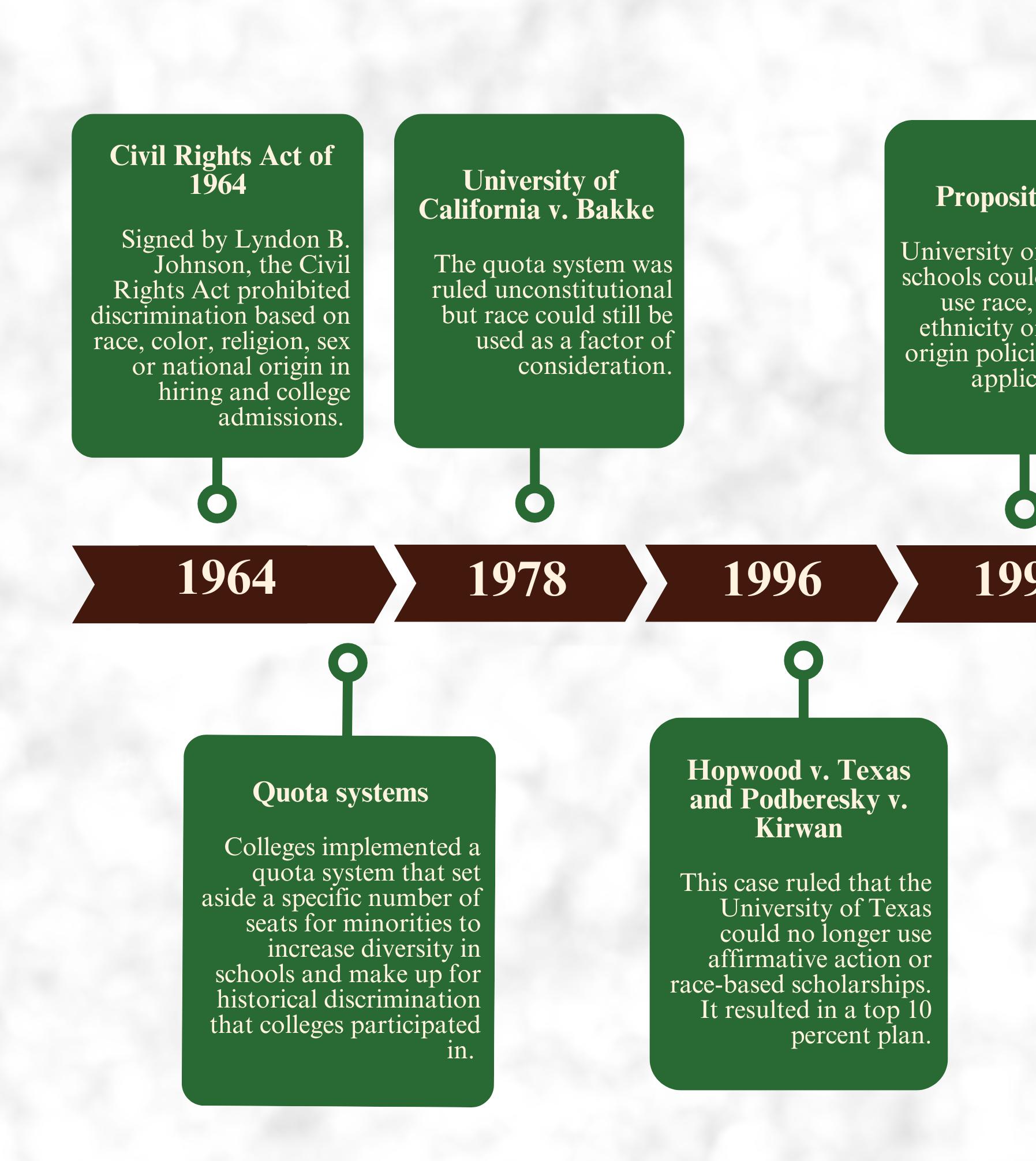
Now that affrmative action has been in effect for nearly 60 years, one question increasingly emerges: is it time for affrmative action to go?

Eight states, including California and Florida, have already banned affrmative action in public universities and college admissions. Texas also enforced a ban from 1996 to 2003 but overturned it in response to Grutter v. Bollinger, a case in which the Supreme Court upheld the constitutionality of affrmative action.


practice or policy of favoring inregarded as disadvantaged or according to Oxford Languages. admissions and workplaces have increase diversity. This spread exsurrounding affrmative action and the debates over its status.
Some people argue that affrmative action needs to end nationwide because it was not meant to be permanent in the frst place, as Justice Sandra Day O’Connor noted in 2003. However, a 2023 report from McKinsey & Company shows that diversity is still lacking in higher education, and only 7% of four-year institutions have made improvements in increasing representation of students of different race, ethnicity and socioeconomic backgrounds in the last seven years. Therefore, critics argue that affrmative action has not worked, so it is time to try something new. States that have banned affrmative action have implemented other methods of increasing their reach of underrepresented students. California, Texas and Florida currently use a percent plan, in which public universities automatically accept the top students (top 9%, 10% and 20%, respectively) in every high school in their state. Proponents of this system argue that it creates more geographical diversity because it attracts students from all over the state, especially those who may have never considered attending one of these universities otherwise. It also arguably brings students of different backgrounds together because it recruits both the top 10% of an inner-city Texas high school with predominantly minorities and the top 10% of a wealthy suburban Texas high school, for example. However, this solution is not a perfect substitute. “One thing [is] that, sadly, [the percent plan] only leads to economic diversity if our high schools continue to be racially segregated,” said Justin Benolkin, social studies teacher. In other words, the percent plan’s efforts to increase diversity relies on another form of discrimination.
Universities have also committed to recruiting students from underrepresented high schools or backgrounds. For example, the Univer-
Justin Benolkin, social studies teachersity of Texas at Austin (UT Austin) has designated representatives who hold information events, visit high schools and attend college fairs to recruit more high schoolers from diverse backgrounds. The university has also created scholarships, such as the Longhorn Opportunity Scholarship, for low-income and underrepresented students.
While research is still fresh on the impact of banning affrmative action, diversity in higher institutions will likely drop if it is eliminated nationwide. Statistics from the University of Michigan, a school that does not use affrmative action, show that enrollment of Black students at University of Michigan decreased from 7% in 2006 to 4% in 2021, even when the number of Black high school students increased from 16% to 19% in that time period.
However, some schools that have banned affrmative action but implemented other solutions have seen increases in diversity. For example, at UT Austin, the percentage of Black and Hispanic students increased after they enacted the percent plan, placed less weight on legacies, gave more fnancial aid and considered socioeconomic factors.
With these mixed results, students will have to wait until June 2023 to see what the Supreme Court decides about affrmative action in the upcoming cases of SFFA v. UNC and SFFA v. Harvard.
“One thing [is] that, sadly, [the percent plan] only leads to economic diversity if our high schools continue to be racially segregated.”
Extracurricular activities are a big part of the high school experience, but they are not for everyone. Although there are many options ranging from sports to academic clubs, extracurriculars aren’t as accessible as they seem and forcing students to participate defeats the activities’ intended purpose.
For one, forcing students to participate in extracurriculars just for the sake of it means that extracurriculars are filled with students who don’t really want to be there. If extracurriculars were required, students would only half-heartedly participate in activities which could also lead to a bad experience for students who are actually passionate about them. Extracurriculars should be avenues of selfdiscovery for students, and requiring students to participate in activities they are not necessarily interested in rejects this idea.
In addition, if extracurriculars were required, this would put even more unnecessary stress on students, as high schoolers already hold many other obligations. According to a study by the Washington Post, high school students reported spending 2.7 hours on homework each weeknight on average. When homework is coupled with an after-school job and chores, adding an extracurricular could easily become a large strain on students
Another issue with requiring extracurriculars is transportation. While many kids have the ability to find consistent transportation to and from their activities, others are not as fortunate. While most schools offer after-school busing for extracurriculars/sports, not all do. Additionally, Mounds View’s late bus is not always convenient for all clubs, considering many end at different times. Also, for sports, practices sometimes occur before school or may run late in the evening, which can make transportation difficult to secure.
Furthermore, cost plays a large role in the accessibility of extracurriculars. According to a report from the National Center for Education Statistics, the average cost of extracurricular activities for children ranges from $100 to $500 per year. Even if schools offer to pay for participation fees, there are often unexpected costs that come with extracurricular participation, such as equipment and lesson costs. Requiring students to participate in extracurriculars would mean requiring parents that may not have the ability to contribute.
Because extracurriculars are not easily accessible to everyone, it is obvious that requiring them would be ignoring the various circumstances and disadvantages some students face. Until extracurriculars provide an even playing ground to students, requiring them should not be considered.

In today’s academic environment, extracurriculars are everything. Whether it be providing students with necessary career-prep or allowing them to stand out on college applications, it seems that participating in multiple extracurriculars in high school is essential for future success. Yet, the benefits of extracurriculars extend beyond their application-packing capabilities, and requiring participation ensures that all students take advantage of these opportunities.
For one, there is a strong correlation between extracurricular participation and academic performance. For example, in a study conducted by the National Center for Education Statistics, high school students who participated in extracurriculars were more likely to have a GPA of 3.0 or above by 20 percentage points. Furthermore, extracurricular participants were more likely to score in the top 25% in standardized tests and earn a bachelor’s degree later on.
Some may argue that, in this regard, correlation does not amount to causation, as students who participate in extracurricular activities are more likely to come from a more privileged background, and, consequently, are also more likely to receive academic help outside of school, leading to better performance on schoolwork and tests. Yet, students from lower-income families may be the most likely to benefit from extracurriculars. In 2001, a survey published in the Journal of Youth Adolescence of over 800 high school students predominantly from low-income backgrounds found a positive correlation between moderate extracurricular participation and a higher grade point average. This proves that extracurricular participation leads to academic benefits for all students.
In addition, extracurriculars allow students to discover their passions, which may pique their interest in a certain career field. This encourages all students to begin post-secondary planning, but it is especially beneficial for low-income students who may have not been introduced to a particular field otherwise.
Participation in extracurriculars has also been linked to an increased sense of belonging. According to a survey of 169 high school juniors published in the Excellence in Education Journal, 77% of extracurricular participants agree that they “fit in” at school, compared to only 65% of non-participants. In addition, extracurricular participants are more likely to have a positive opinion of school, with 57% of extracurricular participants agreeing that school is important compared to 37% of non-participants. For schools looking to increase morale and school spirit, implementing a policy that required extracurricular participation could help to achieve this goal.
Obviously, no teenager wants to be forced into anything, and the same goes for required extracurriculars. But if schools offer students a variety of interesting activities and allow for flexibility, more students would be willing to comply with a mandatory extracurricular participation requirement. For example, students with special circumstances, such as students with after-school jobs, could be given exceptions or accommodations. Furthermore, extracurricular activities do not necessarily have to take place outside of school. Schools could offer activities and clubs during the school day, or provide transportation to and from after-school activities.
To encourage low-income students to participate, schools could make participation more affordable by waiving participation fees, paying for equipment with federal funds and holding fundraisers.
While extracurricular participation in high school is often seen as a means to enhance college applications, it is important to recognize the broader benefits of these activities and the potential benefits of mandatory participation.
1. Learn a language:
Many high school students take some form of a foreign language class, whether that be Chinese, French, German, Spanish or American Sign Language. For students looking to continue language learning in the summer, downloading apps like Duolingo, Babbel or Rosetta Stone to maintain and improve language skills is an effective way to fluency. Students who seek pure fluency, attending language immersion camps, like the ones offered by Concordia Language Villages, are a stead-fast method to achieving it. With over 15 different foreign language immersion programs, students can earn up to a year of foreign language credits.
2. Do an internship:
Internships stand as a low-risk, high-reward way of experimenting with a given career path due to their short-term nature. Career & College Coordinator Madison Hendrickson suggests students interested in internships to utilize Mounds View’s Career & College Center, where information is posted about locallylocal available positions.
3. Build your resume:
Finding a summer job is arguably a necessity when it comes to teens interested in having their own money. Summer jobs that have positions available for teens include Target, Chickfil-a, Chipotle, Starbucks or Caribou.
4. Tour colleges:
Tours provide a first-hand look at different campuses’ life, allowing students to envision themselves as they walk through the numerous facilities, dormitories and academic buildings. When preparing for a college tour, be sure to research the school ahead of time and look for programs and majors that interest you. During the tour, utilize the guide’s knowledge about campus life to your advantage to figure out if the school’s ideals align with your own.
5. Prep for ACT/SAT:
For those taking the ACT or SAT next school year, preparing for these tests early can help relieve stress later in the process. For those looking to stay on top of it, it is helpful to know users who sign up with ACT.org receive access to a free ACT study guide and a full-length practice test. Other free re-

sources for both the ACT and SAT include Kaplan, Magoosh and Khan Academy, which offer a wide variety of test prep. Mounds View also offers tools for student preparation available in Naviance.
6. Get ahead in school:
Hendrickson stresses that while online courses aren’t necessary, they can be beneficial for passionate students. “If there is a subject you are really nerding out about [and] considering getting into in the future, summer courses are a really cool thing to look at,” she said. Mounds View, through the online school platform North Star Online, offers dozens of courses that allow students to get ahead in school or to simply “nerd out.”
7. Volunteer:
Many students often opt to volunteer at local nursing homes, hospices or hospitals in their free time over the summer. For more short-term examples, taking part in local charity events, such as sponsored walks, bake sales, fundraisers and performances are great ways to give back to the community. Feed My Starving Children, Friends & Co, American Red Cross, Animal Humane Society and Meals on Wheels are just a few examples of organizations that are constantly looking for new and dedicated volunteers.
8. Stay in shape:
With school out, and many after-school activities done for the school year, some students opt to club and recreational sports to maintain skills between sports seasons. However, for people who want variation in their athletic routine, or simply want to stay in shape over the long break, joining a local gym with a friend is helpful in staying fit. For those looking for a gym, teens ages of 14 to 19 can now work out for free at Planet Fitness in the summer. If you require more instruction, signing up for spin, pilates or yoga classes at the Shoreview Community Center or a local YMCA is a great way to dedicate yourself to fitness.
9. Do an independent research project: Completing an independent research project, while difficult, allows you a competitive edge in the college application realm. Once you have collected your data, and written your
 by Maya Betti and Isabella Kunc staff reporter and features/spread editor
by Maya Betti and Isabella Kunc staff reporter and features/spread editor
1. Visit art fairs:
Art fairs are a great way for teens to immerse themselves in diverse artistic expressions, explore different creative mediums, engage with local artists, foster a deeper appreciation for the arts and even inspire their own creative outlets. Some art fairs in Minnesota this summer include the Edina Art Fair, the Eagan Art Festival and the Minnehaha Falls Art Fair.
2. Travel the state parks:
With six national parks, Minnesota offers a lot for the adventurer, from hiking to night sky viewing. Voyageurs National Park, located in northern Minnesota, is an ideal park where students can embark on guided canoeing expeditions through its interconnected waterways. The North Country National Scenic Trail is a part of the country’s longest continuous hiking trail, making it an exciting destination for hikers, as well as those interested in birdwatching and horseback riding. Closest to the cities, St. Croix National Scenic Riverway is a great place to do some casual sightseeing and kayaking, along with interactive and engaging tours for visitors of all ages.
3. See new movies:
Many exciting new movies are coming to theaters in the summer of 2023, including “Blue Beetle,” “Barbie,” “Oppenheimer,” “The Marvels,” “Transformers: Rise of the Beasts,” “The Flash,” “Indiana Jones and the Dial of Destiny” and more. If you are looking for reduced prices, AMC Theatres and Emagine Entertainment offer discounts on Tuesdays.
4. Attend local plays:
Attending plays can be an entertaining way to support local culture. Minneapolis hosts a bustling theatrical community, with large theater companies like the Orpheum Theatre, Guthrie Theater, Stages Theatre Company and State Theater all being a short drive away. Orpheum Theatre offers Grammy award-winning plays like “Beetlejuice,” “Tootsie,” “Shane” and “Jagged Little Pill,” while Guthrie Theater has classics like “Into the Woods” and “Murder on the Orient Express.”
5. Visit a museum:
Museums can be a great place to kill a few hours in an airconditioned building during the hot summer months. While cooling off, you can also be able to explore the rich history of Minnesota and learn about new topics not discussed in a typical classroom setting. The cities offer a wide variety of different museums including the Minneapolis Institute of Art, the Science Museum of Minnesota, Mill City Museum and the Minnesota History Center.
6. Check out cultural and food fairs:
Food is an important part of cultural heritage and national identity for many, regardless of age. Luckily, Minnesota and the Twin Cities area hosts a wide variety of authentic cuisine, so immersing yourself in the various cultures is made simple. Some food fairs coming to Minnesota this summer include the Qeej and Hmong Arts Festival, Soul Food Festival, Taste of Minnesota and the Mid-Summer Food Truck Extravaganza, each located within 30 mins of Mounds View.
7. Go to a concert:
The flashing lights, enthusiastic audience and music make each concert a distinctly enthralling place to be, especially in attendance with friends and family. For many, concerts are the perfect time to dress up, take fun photos and bond with other music lovers. Some artists coming to Minneapolis this summer include Ava Max, Charlie Puth, Taylor Swift, Yeah Yeah Yeahs, Tyler Childers, Weezer, The Cure and many more.
8. Visit the Minnesota State Fair:
The Minnesota State Fair is arguably one of the most popular ways to have a good time. With just under a thousand free performances, almost 500 different food items and 30 carnival rides, there’s plenty to keep you busy throughout the almost two weeks the fair runs.
9. Go to a farmers market
Farmers markets offer a unique shopping experience and a change to connect with the people who grow the goods you
research essay, you will have a stand-out piece of work to put on the college resume. Within one of these projects, students pick an academic question and then proceed with a rigorous, scientific investigation. When starting, pick an area of interest, such as economics, business ideas or creative writing, and hone into one question. Once decided, find a mentor to help you through the process. Ideally, a mentor would be someone with substantial knowledge of the subject, such as a professor or a researcher, but a teacher can also be helpful.
10. Find workshops to fine-tune hobbies:
A unique way to build new or existing skills is to take workshops. Within the Twin Cities area, there are a wide variety of options for students to participate in during the summer. The Loft, located in downtown Minneapolis, offers youth writing workshops that teach topics like fantasy, sci-fi, horror and creative writing. For those interested in some light-hearted art, The Workshop, located in East Minneapolis, offers extended wheel classes and specialty pottery-making classes. Finding what interests you and signing up for it is the perfect to having a productive summer.
buy. Just a short drive from Mounds View, the New Brighton Farmers Market, open every Wednesday this summer, is an excellent place to shop locally. In the cities, the Minneapolis Farmers Market, open daily, and the St. Paul Farmers’ Market, open on weekends, are also solid options for shoppers.
10. Go thrift shopping
Thrifting is an eco-friendly way to scratch that shopping itch. While many students choose to try chain stories like Goodwill or Salvation Army, there are also small business options like Buffalo Exchange, Sisterhood Boutique, St. Vincent de Paul Thrift Store and Corner Store Vintage.
Bullvino’s Churrascaria, a Brazilian steakhouse, is a restaurant perfect for many special occasions. With its inviting ambiance and a large selection of dishes, diners can always expect a memorable experience.
Brazilian steakhouses work differently than most restaurants. Instead of ordering one dish at a time, servers will periodically arrive at your table with multiple servings of meat once a card on the table is flipped. After being seated, customers can begin with the salad bar and are given complimentary starters such as bread balls, plantains and mashed potatoes. After looking over the menu which explains the different cuts of meat, a flip of the card from the red side to the green
side indicates you are ready to be served. Servers will continue to bring various skewers of meat to you until you flip the card back to red..
With an impressively large selection of meats, including pork loin, lamb chops, sausage, baconwrapped chicken, garlic beef, New York strips and more, it is easy to look past the wide variety of options also available at the salad bar, which includes fresh asparagus, cherry peppers, roasted peppers, chicken salad and additional items.
As a fan of Brazilian steakhouses, I have been to a few before, but I can confidently say Bullvino’s is my favorite. The quality of the food was comparable to other Brazilian steakhouses, but the classy atmosphere and the speedy service at Bullvino’s were the best I have experienced.
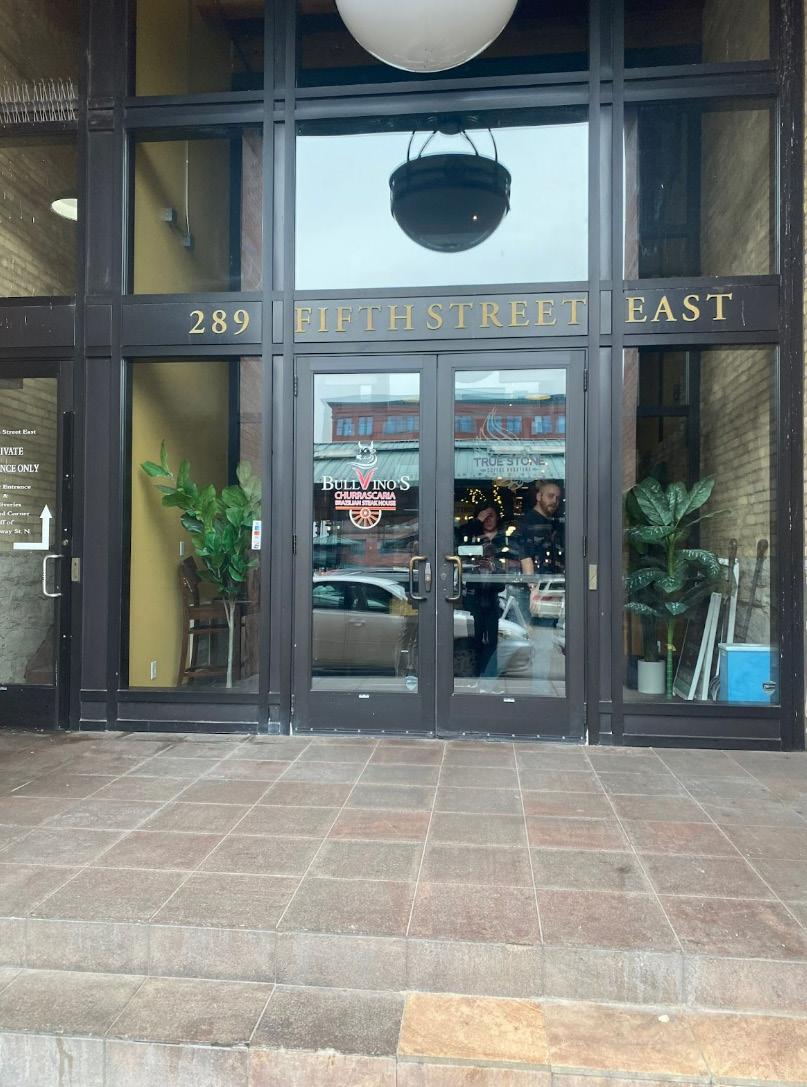
Bullvino’s is by no means cheap, costing $55.95 for the selection of meats. For that reason, I would recommend saving an outing to the steakhouse for special occasions. Bullvino’s also provides complimentary desserts for events like birthdays.
Even with its high price, it is still worth it.. While some options are better than others, there was not anything I did not enjoy at least a little bit. If I had to pick, my least favorite item was the chicken leg. The flavor was decent, but it was not something that I would go out of my way to get again; it was pretty similar to chicken legs at other restaurants.
Even though Bullvino’s is known for their meat, my favorite thing was the grilled pineapple. It is served warm with brown sugar and cinnamon.
I cannot recommend Bullvino’s enough, and if you are a big meat eater, this is the perfect spot for
Directed by and starring Ben Affleck, “Air” was released in April and immediately received positive reviews from critics. Featuring other prominent actors including Matt Damon, Chris Tucker and Viola Davis, it is a biographical film about the struggles and success of the Nike company partnering with Michael Jordan in 1984.
The cinematography aspect of the film is wonderful and includes many great shots throughout the movie. The use of lighting effectively conveys the characters’ feelings and helps the audience relate. Many clips from 1984 are also included which successfully immerse the audience in the story even more.
While “Air” isn’t exclusively a comedy, the numerous comedic moments also keep the story entertaining. These well-crafted comedic elements not only elicit laughter from the audience but also contribute to the development of the characters and the story.

Other notable aspects to mention include the costume and set design, which accurately capture the time period and characters. These elements are brilliantly crafted and seamlessly intertwined with the movie’s plot. Not once does a character seem out of place.
I also very much enjoyed towards the end of the film when clips from Michael Jordan’s heartfelt Basketball Hall of Fame speech, thanking his mom for everything, are shown. These scenes underscore the profound bond between Michael and his mother, highlighting their remarkable relationship and her unwavering support for her son. This portrayal adds an extra layer of emotional resonance to the film, allowing viewers to connect with the story on a more intimate level.
Unfortunately, I did not enjoy how predictable the plot is due to the overused underdog trope. This trope always follows the same formula, with the protagonists facing challenges in the beginning, and then
overcoming them by the end. It was hard to really feel excited throughout watching when the plot is headed in such a clear direction. Along with the trope, there are some scenes when the story is either too focused on the business aspect or includes unnecessarily lengthy conversations, making the movie frequently boring.
Overall, most scenes, with a few exceptions, are very entertaining and include many well-written elements that inform where Nike’s famous phrase “just do it” comes from.
you. The ambiance of the restaurant is amazing and the food is even better. Whether it is a birthday, anniversary, school dance or any other special occasion, you cannot go wrong with Bullvino’s.
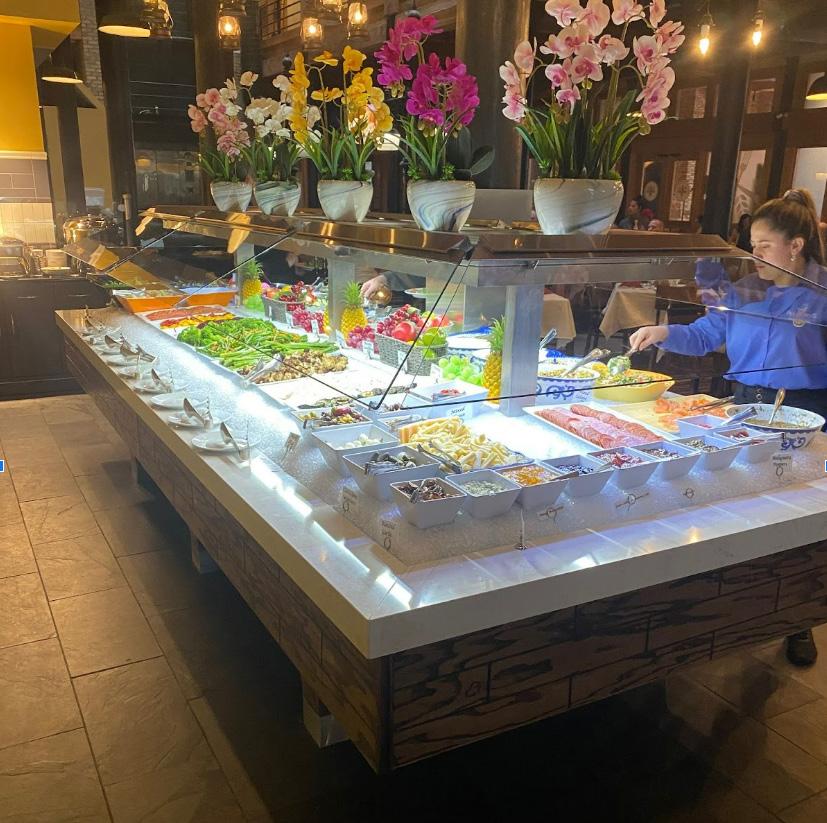 Verdict: 5/5
Verdict: 5/5
The Minnesota State High School LeAs their season draws to a close, the Mounds View boys volleyball team hopes to finish strong and build a foundation for future seasons.
Thus far, the varsity team has participated in 10 games, winning six and losing four, and their performance continues to improve as the season progresses.
The sport holds great significance for
Q: Why did you decide to join the MV Trap team?
A: I decided to join the MV Trap team because one of my friends was on it and it just looked like a lot of fun.
Q: What’s our favorite part of doing trap?
A: My favorite part of doing trap is just kind of going out and being a part of a team, all doing something we enjoy.
Q: What does a typical day of practice look like?
A: We all meet at the start and we go over the rules of gun safety and what is in store for next week, then we go and we shoot two rounds each, and then we submit the score to our online database for other schools.
Q: Do you do trap for fun or competitively? Why?
A: It’s a little bit of both. I started doing it because my friends were doing it, but as I did it more I kind of started getting more into the competitive side of it.
Q: What makes trap unique from other sports?
A: Well, it’s a gun sport which is kind of rare these days which is definitely the biggest thing.
the team members, including senior Fred Trapp. “When I’m not playing I’m always bored, and it just gives me something to do and it builds a community with people,” he said.
Through these new connections, the players have formed lasting bonds. “I’ve met so many people that I was wouldn’t have met without playing volleyball,” said senior Bergen Leafblad.
Most of the boys joined because of encouragement from friends in addition to a genuine desire to play the sport. Others have been playing volleyball for years. “I
kinda got into it at a young age with my mom because my mom also plays,” said senior Seth Bradway, who was excited to take advantage of the opportunity to play volleyball for his school.
Not only does volleyball help the players stay active through a fun sport, but it can also be a great stress reliever. “It’s a great way to stay active and kind of... not focus on anything other than just playing for a couple hours,” said Leafblad. Leafblad explains that volleyball is able to help him take his mind off things and just simply enjoy the sport.
Last year, the team won the conference championship and made it to the state tournament. “Our biggest accomplishment would be winning in our conference last season,” said Leafblad. The team hopes to make it to state again this year. As the school year comes to an end, it marks a memorable journey for the seniors as they head off to college. Most of the boys plan to continue their passion for volleyball in the future. “I really hope to continue wherever I go,” said Leafblad.
Mounds View’s varsity softball players continue to dedicate themselves to the season, working hard to improve both individually and as a team. The teammates share their insights and aspirations for the future, particularly focusing on ways to improve for upcoming seasons.
The team’s daily practice routine starts with their warm-up sets. “We do many reps of what we call ‘everydays,’ which are the core basics of getting muscle memory on track prior to playing,” said Thomas Spencer, varsity coach. Additionally, the warm-up includes daily laps around the track. Overall, the warm-ups take roughly 30 minutes and are followed by live hitting practice.
Most of the girls consider the team a tight-knit group because of the significant amount of time they spend practicing together. “Honestly, I mean, I love the sport, so it’s great and it’s fun to play with a lot of people that I’m friends with and close with and create bonds with new people each
year,” said junior Mary Schmidt. Throughout the season, the players have realized the importance of teamwork and growth, which have become major parts of their culture. “You kind of learn a lot throughout playing this sport, [and] there’s a lot of things that we do. Before a season starts, we do a lot of captain practices, and before practices, when we’re indoors, we do a lot of chalk talk. So we talk about games, we read books, we learn a lot that will help us throughout life along with sports,” said junior Mya Kraabel. For the players, softball offers more than just physical activity; it provides an opportunity to forge lasting connections.
Playing softball has had a profound impact on the players’ lives, prompting self-reflection. “I’ve been playing the sport for a long time, so it’s definitely made some big impacts in my life, just from being a better athlete and softball player to being a better person too. My coaches over the years have just helped me grow as a person,” said Schmidt.
Certain values, such as kindness and empathy, are highly emphasized within the program. “We believe, as a program, that being a good teammate is a core value for us. It has helped each of them to become closer and opened the door to communicate any challenges that they may encounter,“ said Spencer. “We talk a lot about self-talk. On the back of our practice shirts, it says, ‘It’s what you say to yourself when you’re by yourself that matters most.’”
Looking ahead, the outgoing seniors hope to see strong leadership continue to develop on the team. “I would go back to leading by example, so if kids start to see us working hard all the time and trying our best in everything that we do, then they’ll
start to do it and then it’ll go on through the years,” said senior Ashley Branco. Creating a positive environment is something that this year’s juniors would like to work on more as the season tends to run long
with matches happening almost every day. The season concluded for the girls on May 25 leaving them with a 5-17 record, but for Mounds View’s softball players, softball is more than just wins and losses; it is a source of memories and personal growth. The seniors are grateful for the impact the team has had on their lives, while juniors and underclassmen are eager to continue strengthening the team.
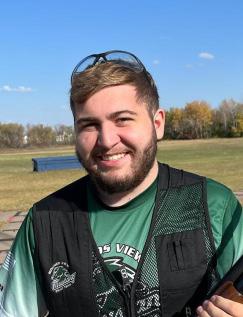
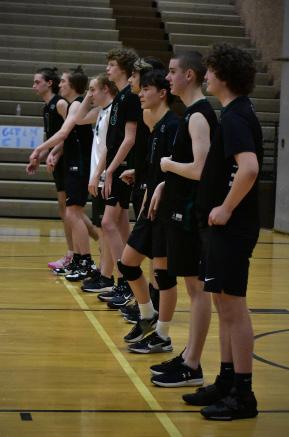
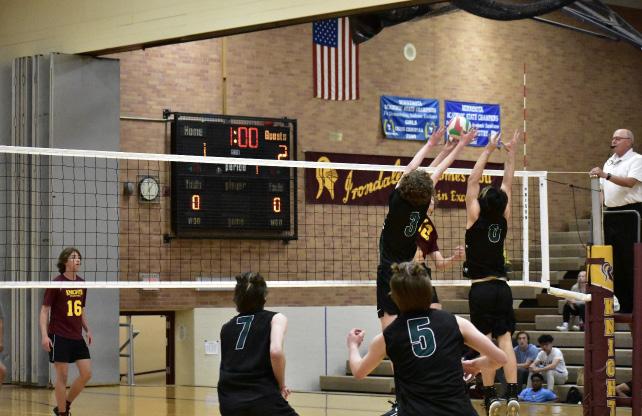
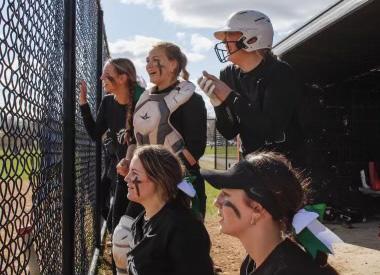

“Honestly, I mean I love the sport, so it’s great and it’s fun to play with a lot of people that I’m friends with.”
Mary Schmidt, ‘24
“I kinda got into it at a young age with my mom because my mom also plays.”
Seth Bradway, ‘23photos by Gloria Liu photos courtesy of Mary Schmidt photo courtesy of Cooper Lapsley
1. National Park located in northern Minnesota
2. Governor who signed the “North Star Promise”
5. Word for activities outside of school


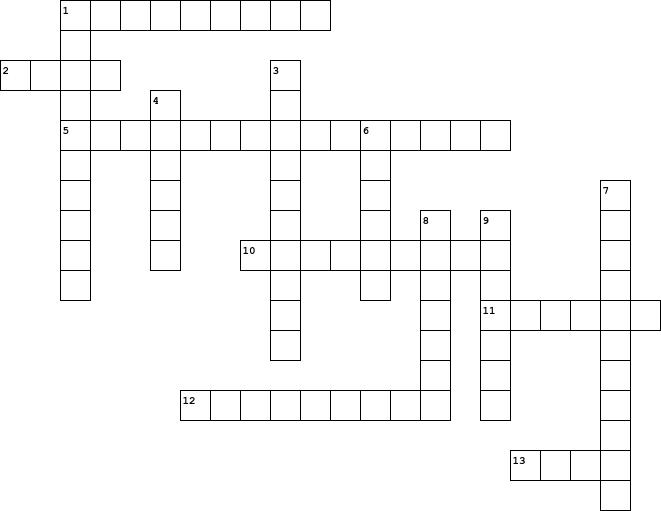
10. 23rd state to allow recreational use of marijuana
11. One of the issues that Principal Robert Reetz was tasked with addressing
12. Brazilian steakhouse located in St. Paul
13. Shoe company that partnered with Michael Jordan in the new movie “Air”

1. Boys sport recently sanctioned by MSHSL
3. Teacher leaving Mounds View after 31 years
4. Word defining a student who stays away from school with no explanation
6. Name of Lulu Ma’s dog
7. Movie directed by Christopher Nolan coming to theater this summer
8. One way NHS presidents Kylie Yu and Mathias McGinnis campaigned
9. University being sued by Students for Fair Admissions